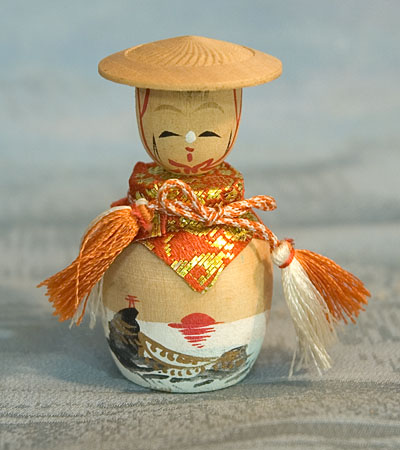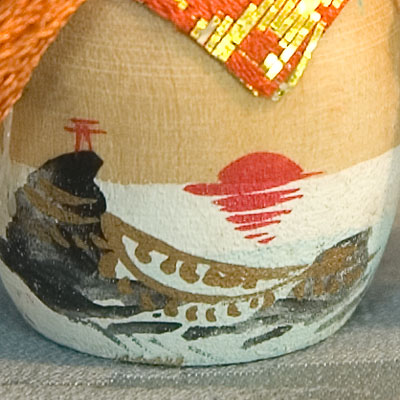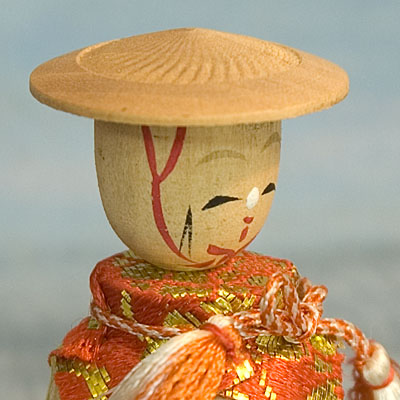


Description
Lovely Japanese wooden kokeshi doll featuring the painted image of a Japanese shrine gate on rocks beside the sea. This unique doll is less than 40 years old and is in fair condition with marks and scratches from handling and discoloration and stains from age and display. Please read below to learn about the history of kokeshi dolls, one of Japan’s most unique and distinctive folk crafts.
Size:
Height: 2.3 inches (5.8 centimeters)
Weight: 0.5 ounces (14 grams)
Important note:
Images of the kokeshi we list are often uploaded to our Japan Vintage Kokeshi Blog which is an on-line gallery of unique and interesting kokeshi dolls. The purpose of this blog is strictly to share images of some of the wonderful dolls we encounter in the course of our work, and to provide a digital archive to preserve these images into the future. If you purchase a kokeshi from us and do not want a digital copy of your doll displayed in the photo blog or archive then please simply send us an email indicating your preference and we will promptly remove the image.
Click here to see more kokeshi!
Click here to see other Japanese dolls!
Click here to see additional treasures from Japan!
More about Kokeshi
Kokeshi wooden dolls are one of the most unique and interesting of Japan’s many traditional folk crafts. Originating in the early 19th century in the northern spa towns of Miyagi prefecture, kokeshi are thought to have first been produced as toys for children from leftover bits of scrap wood. These early dolls were made by craftsmen who earned their living producing other types of woodcraft, but who eventually began to create kokeshi to be sold as souvenirs in the area’s many local hot spring resorts. Over time the craft was refined, with many regional varieties appearing reflecting a wide range of technical and artistic variation. Today there are several schools of kokeshi design led by master craftsmen who often pass their trade to succeeding generations within their own family.
When collecting kokeshi it is important to note that you will likely encounter two main types; dolls which are made by artists and those which are mass-produced to be sold as souvenirs. The former are usually one-of-a-kind originals created by dedicated artisans who take their work very seriously and place great emphasis on traditional design and appearance. The other type of kokeshi are those which are manufactured specifically to be sold as souvenirs of famous or interesting places such as resorts or hot springs. These are produced en-mass, and while often attractive and interesting memorabilia they are not as frequently sought after by collectors and usually command a lower selling price. How can you determine if a kokeshi is an ‘artist’ or ‘craftsman’ style doll? This is actually quite easy as artist dolls are normally signed (on the bottom) by the maker, and may have no other writing on the body of the doll besides decorative calligraphy. Souvenir types on the other hand are normally unsigned and may have the name of the place which sold them conspicuously visible on the body of the doll. Collectors of Kokeshi typically place special emphasis on the facial quality of the dolls, desiring certain types – gentle or mischievous for example – over others. One interesting Japanese Kokeshi collector we previously met expressed a preference for newer dolls over older ones, fearing the older dolls may be haunted.
item code: R4S4-0003628
ship code: L1650
Leave a comment